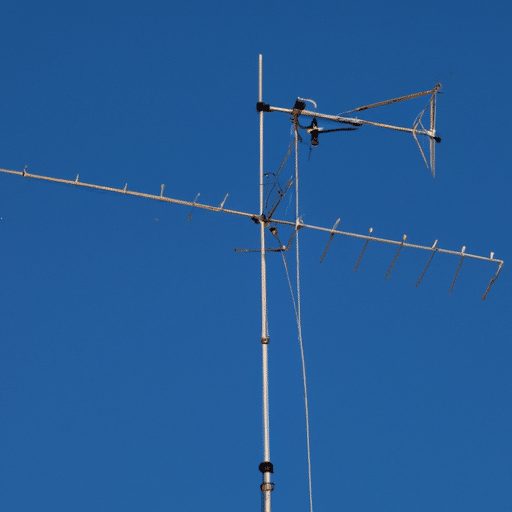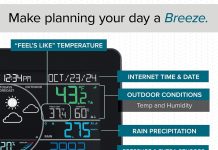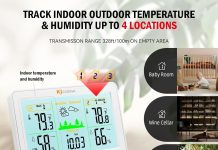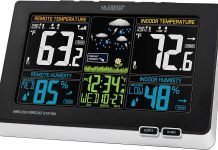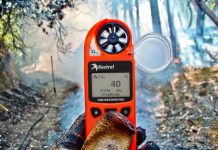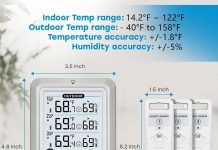In this article, we explore the various factors that can influence the reception and range of home weather stations. From the position and placement of the weather station to the surrounding environment and potential interference, understanding these factors can help ensure accurate and reliable weather data. Whether you’re a weather enthusiast or simply looking to better plan outdoor activities, discovering the key elements that impact the performance of your home weather station will undoubtedly enhance your experience. So, let’s embark on this fascinating journey and uncover the secrets behind optimal reception and extended range!
Review contents
Factors that Affect Reception and Range of Home Weather Stations
When setting up a home weather station, there are several factors that can affect its reception and range. Understanding these factors can help ensure accurate and reliable weather data. Let’s explore each of these factors in detail.
1. Location and Placement
The location and placement of your home weather station play a crucial role in determining its reception and range. It is important to place the station in an open area, away from any obstructions such as buildings, trees, or large objects that can block or interfere with the signals. This allows for better signal reception and transmission, resulting in more accurate weather data.
2. Antenna Type and Alignment
The type and alignment of the antenna used in the weather station can significantly impact its reception and range. Different types of antennas have varying signal characteristics, such as omnidirectional or directional antennas. Omnidirectional antennas receive signals from all directions, while directional antennas focus on signals from a specific direction. Ensuring proper alignment of the antenna is also essential to optimize reception and range.
3. Signal Interference
Signal interference from various sources can disrupt the reception and range of a home weather station. Common sources of interference include nearby electronic devices, power lines, wireless networks, and even atmospheric conditions. These interferences can weaken or distort the signals, leading to inaccurate weather data. Minimizing the distance between the weather station and potential sources of interference can help mitigate this issue.
4. Frequency Range
The frequency range at which a home weather station operates impacts its reception and range. Weather stations typically operate within specific frequency bands, such as 433 MHz or 2.4 GHz. The choice of frequency should consider the local regulations and the desired range for data transmission. Higher frequency bands often offer greater range but may be subject to more interference, while lower frequency bands can provide better penetration through obstacles.
5. Power Supply
The power supply of a home weather station is critical for its operation and range. Most weather stations are powered either by batteries or an electrical source. It is important to ensure a reliable power supply to maintain continuous operation and accurate data transmission. Weak or fluctuating power can negatively impact the reception and range, leading to intermittent or unreliable weather data.
6. Wireless Technology
The choice of wireless technology used in the home weather station affects its reception and range. Different wireless technologies provide varying data transmission rates, range capabilities, and resistance to interference. Common wireless technologies used in weather stations include Wi-Fi, Bluetooth, and proprietary wireless protocols. Selecting a technology that aligns with your needs and offers a stable and reliable connection can optimize the reception and range of your weather station.
7. Data Transmission Protocols
The data transmission protocols used by a home weather station are essential for efficient and accurate data transfer. Different protocols have varying degrees of reliability, range, and speed. Some common protocols used in weather stations include Wi-Fi, Zigbee, and RF. Choosing a protocol that offers a robust and secure connection, while also considering the desired range, can ensure uninterrupted data transmission and reliable weather updates.
8. Obstructions and Terrain
Obstructions and the surrounding terrain can affect the reception and range of a home weather station. If your weather station is located in an area with tall buildings, dense vegetation, or hilly terrain, it may experience reduced reception and range. These obstructions can block or weaken the signals, resulting in incomplete or inaccurate weather data. Choosing a suitable location that minimizes such obstructions can help optimize reception and range.
9. Weather Conditions
Weather conditions themselves can impact the reception and range of a weather station. Extreme weather events like thunderstorms, heavy rainfall, or dense fog can interfere with the signals and degrade reception. Additionally, weather conditions can affect the environmental factors that the weather station measures, such as wind speed and temperature. It is crucial to consider these potential interferences when selecting a location or interpreting the data collected by the weather station.
10. External Factors
External factors such as electromagnetic interference, solar radiation, and geographical location can also influence the reception and range of a home weather station. Nearby electrical devices emitting electromagnetic waves can interfere with the signals, while intense solar radiation can affect the performance of the station’s components. Moreover, the geographical location of the weather station can impact its reception and range due to variations in atmospheric conditions and landscape features.
In conclusion, several factors affect the reception and range of home weather stations. From the location and placement to the choice of antenna and wireless technology, each aspect plays a crucial role in ensuring accurate and reliable weather data. By considering these factors and optimizing the setup of your weather station, you can enjoy more accurate and comprehensive weather information for your home.

